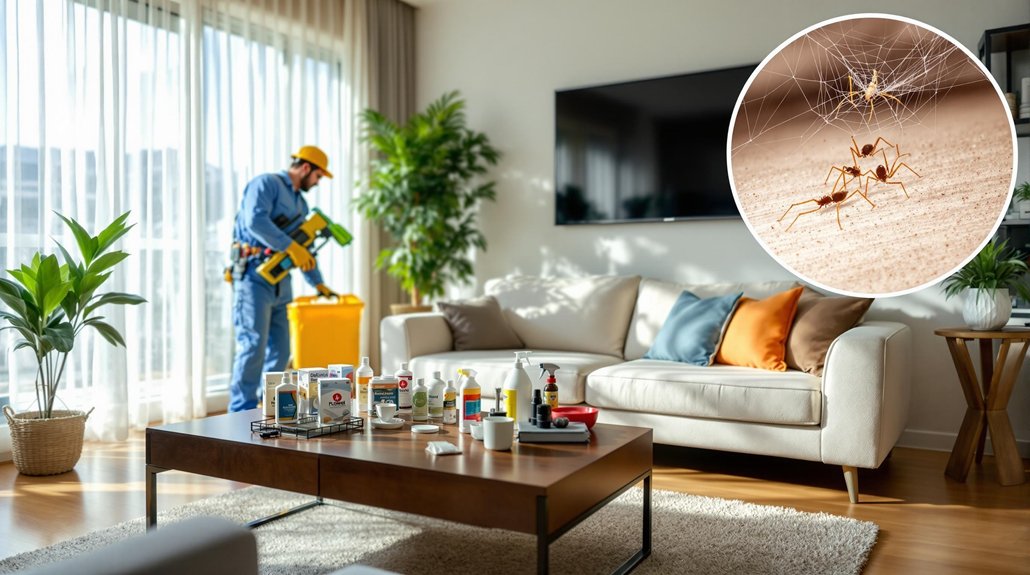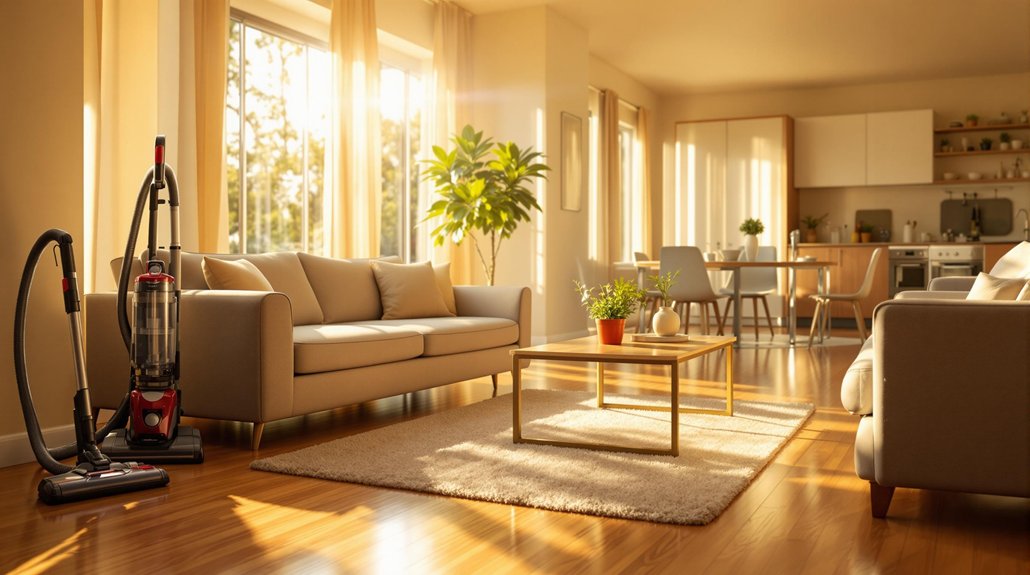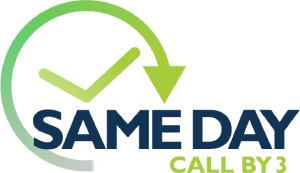Cleaning the house before pest control is important. It helps remove food sources and hiding spots for pests, making treatments more effective. A clean environment supports long-term prevention against infestations. However, it’s vital to avoid deep cleaning right after treatment to allow pesticides to work. Focusing on key areas like kitchens and bathrooms is significant. Knowing how to clean and what to avoid can further enhance pest control efforts, alongside communication with the exterminator for better results.
Key Article Highlights
- Yes, cleaning before pest control helps eliminate food sources and hiding spots for pests, enhancing treatment effectiveness.
- Focus on high-risk areas like kitchens and bathrooms to reduce pest attraction and infestation likelihood.
- Maintain a clutter-free environment to allow pest control professionals easy access to treatment areas.
- Avoid deep cleaning immediately after treatment to preserve pesticides and their effectiveness.
- Communicate with your exterminator about cleaning practices to ensure they align with treatment plans.
Understanding the Role of Cleanliness in Pest Control
Cleaning plays an essential role in effective pest control, as it helps eliminate potential food sources and hiding places for pests. Many people hold cleanliness myths, believing that a messy home is the sole reason for pest problems. However, pests can invade even the cleanest spaces. Pest misconceptions often lead to blame on individuals for attracting pests due to poor hygiene. In reality, pests may enter homes for various reasons, including seeking shelter or warmth. Regular cleaning can notably reduce the chances of an infestation by removing crumbs, spills, and clutter. Implementing heat treatment is a comprehensive approach that can further enhance your efforts in preventing pest issues. Understanding the importance of cleanliness allows individuals to take proactive steps in pest management. A clean environment not only deters pests but also promotes overall health and well-being. Additionally, implementing perimeter sprays and other pest control strategies can further enhance the effectiveness of your cleaning efforts.
The Importance of a Thorough Inspection
A thorough inspection is essential in the pest control process. It helps in pest identification and enables pest control professionals to develop an effective treatment plan. During this inspection, various areas of the home are examined to uncover pests and their potential hiding spots. Effective treatments often include residual sprays for both interior and exterior applications, and understanding the pest lifecycle is crucial for effective treatments.
| Inspection Area | Purpose |
|---|---|
| Attics | Check for rodents |
| Basements | Look for moisture pests |
| Kitchens | Identify food pests |
| Exteriors | Assess entry points |
Each area provides critical information that assists in targeting the right pests. Skipping this step may lead to ineffective treatments and recurring infestations. Additionally, effective rodent control involves exclusion repairs to prevent access and eliminate activity. As a result, homeowners should prioritize a thorough inspection for successful pest management.
What Types of Pests Are You Dealing With?

Understanding the types of pests in a home is essential for effective pest control. Common household pests can vary in behavior, which influences how they are treated. Knowing these details helps in choosing the right approach for each pest problem.
Common Household Pests
Many households face issues with common pests that can disrupt daily life. Understanding these pests is essential for effective control. Cockroaches are notorious for their habits, often hiding in dark, damp areas and coming out at night in search of food. Ants create visible trails to communicate with their colony, leading to food sources.
| Pest Type | Key Characteristics |
|---|---|
| Cockroach | Nocturnal, prefers moisture |
| Ant | Forms trails, organized colonies |
| Termite | Wood-destroying, hidden nests |
| Spider | Web builders, often harmless |
| Rodent | Nocturnal, seeks food and shelter |
Identifying these pests can help households take appropriate steps for prevention and management.
Pest Behavior Insights
Pest behavior can vary greatly among different types of pests, each exhibiting unique habits and traits. Understanding these behaviors is essential for effective pest control. Common pests like ants and cockroaches are often attracted to food sources and moisture, which are key pest attraction factors. Their behavior patterns include foraging for food and nesting in hidden areas. Termites, on the other hand, are drawn to wood, showing a behavior pattern focused on tunneling and feeding. Bed bugs exhibit nocturnal habits, hiding in mattresses and crevices during the day. By recognizing these pest behavior patterns and attraction factors, homeowners can better prepare their spaces for pest control efforts, ultimately leading to more successful management strategies.
Treatment Requirements Explained
Identifying the types of pests present in a home is crucial for effective treatment. Different pests require specific treatment methods. For example, ants may need bait, while termites often necessitate wood treatment. Roaches might be controlled with sprays or traps. Understanding these differences helps in applying the right approach.
Chemical safety is also a significant aspect of pest control. Homeowners should be aware of the chemicals used in their homes. It is imperative to follow all safety guidelines when using pesticides. This includes wearing protective gear and maintaining proper ventilation. By knowing the types of pests and adhering to chemical safety, homeowners can guarantee a more effective and safe pest control experience.
Cleaning Practices That Can Help

Cleaning practices play an essential role in preparing a space for effective pest control. When homeowners prioritize cleaning, they not only enhance the effectiveness of pest treatments but also contribute to long-term pest prevention. Here are three key practices to take into account:
- Declutter: Remove unnecessary items from surfaces to reduce hiding spots for pests and make treatment easier.
- Use Proper Cleaning Tools: Equip yourself with effective cleaning tools such as brooms, mops, and vacuum cleaners to guarantee all corners are clean.
- Clean Regularly: Establish a routine cleaning schedule to maintain a pest-free environment and prevent future infestations.
Areas of the Home to Focus On
Certain areas of the home are more prone to pest activity and require special attention during the cleaning process. The kitchen is a key focus, as food remnants can attract pests. Cleaning kitchen surfaces thoroughly is essential. This includes countertops, tables, and floors, where crumbs and spills may linger.
Another critical area is the bathroom. Bathroom corners often collect moisture and dirt, creating a perfect environment for pests. These corners should be cleaned regularly to prevent infestations.
Additionally, checking and cleaning under sinks and around appliances is important. By focusing on these specific areas, homeowners can reduce the likelihood of pest problems and create a cleaner, safer living space before pest control services are performed.
What to Avoid When Cleaning
When preparing for pest control, there are certain cleaning actions to avoid. Deep cleaning areas can disrupt pest control efforts, as it may push pests into new hiding spots. Additionally, moving furniture too much can disturb pest nests and make the situation worse.
Avoid Deep Cleaning Areas
Avoiding deep cleaning in specific areas is essential before pest control treatments. Many people hold cleaning misconceptions that suggest thorough cleaning will eliminate pests. However, deep cleaning can inadvertently attract pests by disturbing their hiding spots. It is vital to maintain some level of pest presence to allow for effective treatment. Here are three areas to avoid deep cleaning before pest control:
- Corners and Crevices – These are common hiding spots for pests and should remain undisturbed.
- Behind Appliances – Moving appliances can expose pests, making them harder to treat.
- Storage Areas – Items in storage may be hiding pests; deep cleaning can disrupt their locations.
Don’t Move Furniture Excessively
Moving furniture excessively can disrupt pest habitats and complicate treatment efforts. When preparing for pest control, it is important to maintain proper furniture placement. Moving items too much can scatter pests and make it harder for exterminators to target their nests. Instead of shifting furniture around, focus on clutter management. Clear surfaces and remove items that can obstruct treatment areas. This will allow pest control professionals to do their job effectively without unnecessary disruptions. Keeping furniture in place also helps preserve the original environment, making it easier to identify pest activity. In conclusion, avoid excessive furniture movement, prioritize clutter management, and guarantee that pest control can be conducted smoothly and efficiently.
Communicating With Your Exterminator
How can effective communication with an exterminator enhance pest control efforts? Clear dialogue helps set exterminator expectations and guarantees that both parties understand the process. Here are three essential communication tips:
- Describe the Problem: Share detailed information about the pest issue, including the type of pest and its locations.
- Ask Questions: Inquire about treatment methods, safety measures, and what to expect during and after the process.
- Provide Access: Inform the exterminator of any areas that may be difficult to reach or require special attention.
The Timing of Cleaning Before Treatment
Timing is important when cleaning before pest control treatment. A proper cleaning schedule can enhance the effectiveness of the pest treatment. Cleaning too close to the treatment may disrupt the process and reduce its success.
Cleaning Schedule Considerations
Before scheduling a cleaning, one must consider the best timing to guarantee effective pest control. A well-planned cleaning schedule can enhance the pest treatment process. It is important to think about cleaning frequency and clutter management. Here are three key considerations:
- Cleaning Duration: Ascertain enough time is allocated for thorough cleaning before the pest control appointment.
- Clutter-Free Environment: Remove unnecessary items to provide easy access for pest control professionals.
- Timing with Treatment: Clean just before the treatment to avoid reintroducing pests to the treated areas.
Impact on Pest Treatment
Effective cleaning prior to pest treatment can profoundly influence the success of the pest control process. When a home is clean, it reduces pest attraction by eliminating food scraps and clutter. This makes it more difficult for pests to find hiding spots. Various cleaning methods can be employed, such as sweeping, vacuuming, and disinfecting surfaces. These actions should be taken a few days before pest control services are scheduled to allow any remaining pests to be affected by the treatment. However, it is important not to clean immediately after treatment, as this may disturb the pesticides. Overall, proper cleaning enhances the effectiveness of pest control and promotes a healthier living environment.
Post-Treatment Cleaning Recommendations
After pest control treatment, it is essential to follow specific cleaning recommendations to guarantee effectiveness. Proper post-treatment hygiene confirms that the pest control remains effective and helps in long-term pest control maintenance.
- Wait Before Cleaning: Allow at least 24 hours before cleaning surfaces where treatment was applied to confirm chemicals work effectively.
- Dust and Vacuum: After the waiting period, dust and vacuum the treated areas to remove any dead pests and residues without disrupting the treatment.
- Use Mild Cleaners: When cleaning, opt for mild cleaners that do not interfere with the pest control products used.
Following these steps will help maintain a pest-free environment and support the success of the treatment.
Long-Term Prevention Strategies
While pest control treatments are important, maintaining a pest-free environment requires ongoing effort and attention. Homeowners should implement preventive measures to reduce the chances of infestations. Keeping the home clean and tidy is essential. Regularly vacuuming, sweeping, and wiping surfaces can eliminate food sources for pests. Additionally, sealing cracks and gaps in walls and windows acts as a barrier against unwanted visitors. It is also helpful to store food in airtight containers and dispose of trash regularly. In gardens, maintaining proper landscaping and removing standing water can deter pests. These long-term solutions create an environment that is less inviting to pests, ensuring that the home remains safe and comfortable over time.
Frequently Asked Questions
How Long After Cleaning Should I Schedule Pest Control?
After a thorough cleaning, one might liken scheduling pest control to planting seeds in freshly tilled soil. Ideally, waiting 24 to 48 hours allows the cleaning schedule to settle before applying pest control treatments effectively.
Can I Clean During Pest Control Treatment?
During pest control treatment, it is advisable to avoid cleaning. A cleaning schedule should be adjusted to allow the treatment to work effectively. Cleaning too soon can disrupt the pest control process and its effectiveness.
Will Cleaning Affect the Efficacy of Pest Control Products?
Cleaning frequently can impact the effectiveness of pest control products. If surfaces are wiped down too soon after treatment, it may reduce the product’s ability to eliminate pests. Proper timing is essential for ideal results.
Do I Need to Move Furniture Before Pest Control?
In a world where furniture arrangements matter, moving items before pest control can enhance pest prevention. Clearing space allows easier access for treatment, ensuring all areas receive proper attention for effective pest management and long-term results.
Are There Specific Cleaning Products to Avoid Before Treatment?
Before pest control treatment, it’s important to avoid cleaning chemicals that leave surface residues. Such residues can interfere with the effectiveness of pest control products, reducing their ability to eliminate pests effectively.
Call today if you are in need of a pest exterminator in San Antonio, TX
(210) 796-6593

